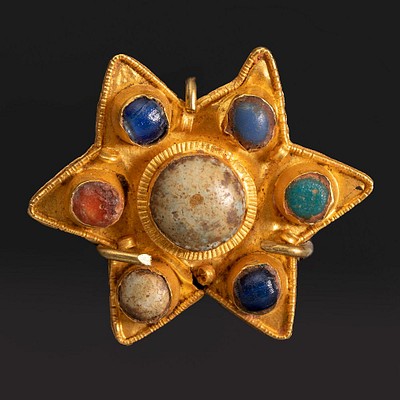RAFAEL CUENCA MUÑOZ (Córdoba, 1895 - Madrid, 1967). "Jaleo flamenco". Oil on canvas.
Lot 97
About Seller
Setdart Auction House
Carrer Aragó 346
Barcelona
Spain
Setdart Subastas was born in 2004 and is currently the first online art auction in Spain with solidity, prestige and reliability guaranteed by our more than 60,000 users. Setdart has a young, dynamic and enterprising team ready to successfully manage the purchase and sale of art works through custom...Read more
Estimate:
EUR€2,000 - EUR€2,500
$2,083.33 - $2,604.17
Absentee vs Live bid
Two ways to bid:
- Leave a max absentee bid and the platform will bid on your behalf up to your maximum bid during the live auction.
- Bid live during the auction and your bids will be submitted real-time to the auctioneer.
Bid Increments
| Price | Bid Increment |
|---|---|
| EUR€0 | EUR€10 |
| EUR€200 | EUR€25 |
| EUR€500 | EUR€50 |
| EUR€1,000 | EUR€100 |
| EUR€3,000 | EUR€200 |
| EUR€5,000 | EUR€500 |
| EUR€10,000 | EUR€1,000 |
| EUR€20,000 | EUR€2,000 |
| EUR€50,000 | EUR€5,000 |
About Auction
By Setdart Auction House
Dec 21, 2021
Set Reminder
2021-12-21 07:30:00
2021-12-21 07:30:00
America/New_York
Bidsquare
Bidsquare : Córdoba: 2,000 Years of Art
https://www.bidsquare.com/auctions/setdart-auction-house/c-rdoba-2-000-years-of-art-8049
Setdart Auction House sofia@setdart.com
Setdart Auction House sofia@setdart.com
- Lot Description
RAFAEL CUENCA MUÑOZ (Córdoba, 1895 - Madrid, 1967). "Jaleo flamenco". Oil on canvas. Signed in the lower right corner. Measurements: 110 x 90,5 cm; 123 x 101,5 cm (frame). The work stands out for the movement, not only generated by the author through the arrangement of the figures, but also by the type of technique used, with a brushstroke impastoed, thick and vibrant. In the second half of the 19th century, Spain developed an art of romantic heritage, costumbrista and realistic and meticulous workmanship, which focused on the representation of subjects, themes and characters that reflect a new sense of folklore. In this context, the painters sought to reflect the types and customs of their own land, which made it different and unique, thus vindicating their own roots and, above all, the traditions and ways of dressing and behaving that were threatened by the notable growth of urban areas and the imposition of new fashions brought from outside. Art, fundamentally in its pictorial aspect, thus became in a certain way a vehicle of expression capable of making regional peculiarities known to the rest of the nation. A painter of landscapes, figures and flowers, Rafael Cuenca Muñoz specialized in the pastel technique, becoming considered in his time as the best pastelist of the moment. Self-taught, he combined his artistic practice with teaching and enjoyed great popularity, especially in the thirties, when tributes were paid to him, such as the one held at the Palace Hotel in Cordoba in 1934.
- Shipping Info
-
In-house shipping available. Please inquire at admin@setdart.com.
-
- Buyer's Premium



 EUR
EUR CAD
CAD AUD
AUD GBP
GBP MXN
MXN HKD
HKD CNY
CNY MYR
MYR SEK
SEK SGD
SGD CHF
CHF THB
THB















